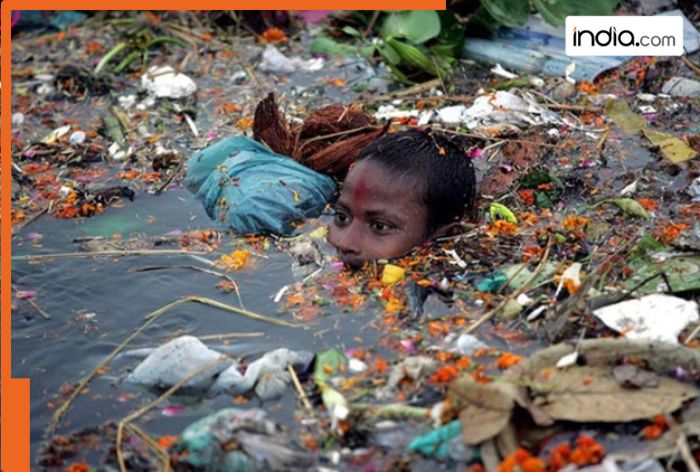THIS is world’s most polluted river, not Ganga or Yamuna, it is located in…, name is..
This country is widely regarded as the world’s second-largest plastic polluter, trailing only China. In many areas, residents are left with no functioning waste-collection service, leading to widespread open dumping.

Rivers are like the lifelines of the Earth. They carry fresh water, minerals, and support people, animals and plants across different regions. But today, more than 2.5 billion people depend on rivers that are becoming dangerously polluted. The UN says that 80 per cent of the world’s wastewater is released into nature without treatment, and much of it flows straight into rivers.
How are the polluted rivers ranked?
Experts use several factors to decide how polluted a river is:
- How much chemical and biological waste is in the water
- The effect on local people and their health
- How much plastic waste is found (kg per square km)
- Loss of fish, plants and other biodiversity
- Whether the river can still be cleaned and restored
World’s most polluted river: Citarum (Tarum) River
The Citarum River, also known by its older name, the Tarum River, is the longest and largest river in West Java, Indonesia. It is the third longest river on the island of Java, after the Bengawan Solo and Brantas rivers. The Citarum is very important for the people of West Java, providing water for farming, homes and industries.
However, it is also known as one of the most polluted rivers on the planet because of huge amounts of household waste, industrial chemicals and plastic dumped into it.
Indonesia is widely regarded as the world’s second-largest plastic polluter, trailing only China. Much of Southeast Asia struggles with similar challenges, but Indonesia’s problem stands out due to several converging factors: a rapidly expanding population, exploding tourism, rising plastic consumption, poor waste segregation, and a severely inadequate recycling system.
In many areas, residents are left with no functioning waste-collection service, leading to widespread open dumping. Rubbish is often discarded in fields, rivers and roadsides, a mix of low environmental awareness and lack of public infrastructure.
The crisis is starkly visible in Bali, the global tourist hotspot famed for its once-pristine beaches. Every year, tonnes of plastic and household waste wash ashore, some from the island itself, much from neighbouring regions carried by ocean currents.
A 2018 government investigation revealed an alarming reality: up to 340,000 tonnes of hazardous waste flowed into Indonesia’s rivers every day. In parts of Java, the Citarum and other waterways turned black, toxic and foam-covered, signalling the scale of contamination. The rapid growth of cities worsened the decline, as urban households dumped massive quantities of single-use plastics directly into rivers.
Today, Indonesia’s rivers remain among the world’s most polluted, underscoring the urgent need for systemic waste management, public awareness, and long-term environmental intervention.
What's Your Reaction?




















































